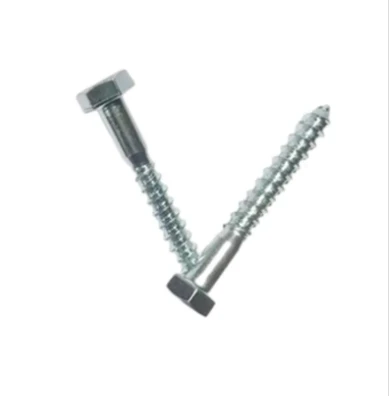Dec . 18, 2024 10:25 Back to list
Durable Stainless Steel Screw Rods for Versatile Applications in Construction and Manufacturing
The Versatile Applications of Stainless Steel Screwed Rods
Stainless steel screwed rods, often referred to as threaded rods or bolts, are essential components in various industries due to their unique properties and versatility. Made from stainless steel, these rods resist corrosion and rust, making them ideal for both indoor and outdoor applications. With a wide range of sizes and thread configurations, they can be employed in countless fastening and linkage solutions.
Understanding Stainless Steel
Stainless steel is an alloy that primarily contains iron, chromium, and nickel. The addition of chromium is vital as it forms a passive layer of chromium oxide on the surface, protecting the metal from oxidation and corrosion. This property makes stainless steel a popular choice in environments that are exposed to water, chemicals, or extreme temperatures. Stainless steel is categorized into various grades, with 304 and 316 being the most commonly used for screws and rods due to their excellent mechanical properties and resistance to pitting.
Key Features of Stainless Steel Screwed Rods
1. Corrosion Resistance One of the most significant advantages of using stainless steel screwed rods is their durability. Unlike traditional steel rods, which can rust and weaken over time, stainless steel screwed rods maintain their integrity even in harsh conditions. This property makes them particularly valuable in marine applications, chemical processing, and food manufacturing.
2. High Strength Stainless steel screws and rods exhibit high tensile strength, allowing them to withstand heavy loads and resist deformation. This strength-to-weight ratio makes them suitable for applications in construction, automotive, and aerospace industries.
3. Aesthetic Appeal The sleek, shiny appearance of stainless steel adds an aesthetic touch to assemblies and structures where visible fittings are necessary. This quality is often leveraged in architectural designs, where the visual appeal of materials is as crucial as their functionality.
stainless steel screwed rod

4. Versatility Stainless steel screwed rods can be used in various applications, from securing structural frames and machinery components to creating tensioning systems in outdoor structures. Their adaptability is evident across industries such as construction, electronics, energy, and pipework.
Applications in Different Industries
1. Construction In the construction industry, stainless steel screwed rods are used for supporting structures, hangers, and bracing components. Their resistance to environmental factors ensures the longevity of building projects, especially in coastal areas where saltwater exposure is a concern.
2. Marine Due to their corrosion resistance, stainless steel screwed rods are commonly found in marine applications, including boat construction and maintenance. They are used to secure fittings, masts, and other critical components that require reliable fastening in a humid, salty environment.
3. Automotive The automotive industry relies on stainless steel screwed rods for both structural integrity and aesthetic purposes. These rods are used within engine components, chassis systems, and exterior fixtures that demand both strength and appearance.
4. Home Improvement DIY enthusiasts and professionals alike utilize stainless steel screwed rods in various home improvement projects. From constructing furniture to securing outdoor structures like pergolas and decks, their reliability ensures safety and stability.
Conclusion
Stainless steel screwed rods are more than just fasteners; they are integral components that contribute to the functionality and safety of numerous applications. With their impressive resistance to corrosion, strength, and versatility, these rods play a vital role across diverse industries. As demands for durable and reliable materials continue to grow, the importance of stainless steel screwed rods will only increase, ensuring their continued use in both innovative projects and everyday applications. Whether you're an engineer, a contractor, or simply a DIY enthusiast, understanding the benefits and applications of these robust components can enhance the quality and longevity of your projects.


